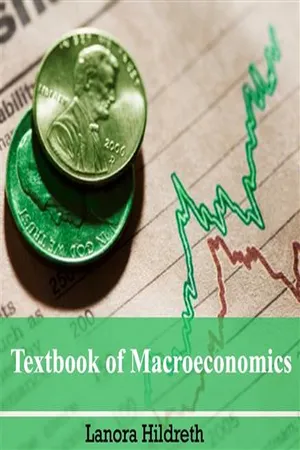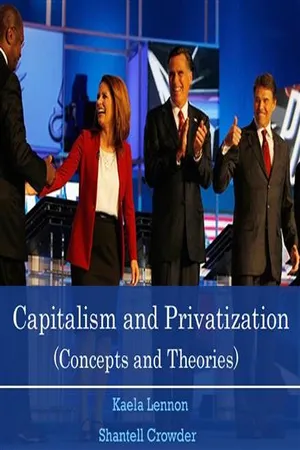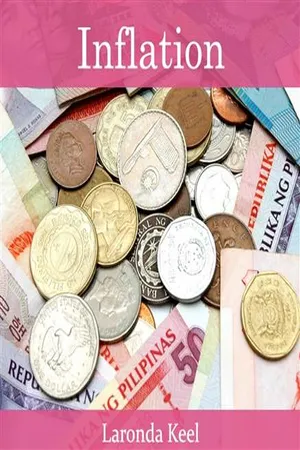Economics
Conventional Monetary Policy Tools
Conventional monetary policy tools refer to the standard measures used by central banks to influence the money supply and interest rates. These tools typically include open market operations, discount rate changes, and reserve requirements. By adjusting these tools, central banks aim to achieve their macroeconomic objectives, such as price stability and full employment.
Written by Perlego with AI-assistance
Related key terms
1 of 5
5 Key excerpts on "Conventional Monetary Policy Tools"
- No longer available |Learn more
- (Author)
- 2014(Publication Date)
- Library Press(Publisher)
The beginning of monetary policy as such comes from the late 19th century, where it was used to maintain the gold standard. A policy is referred to as contractionary if it reduces the size of the money supply or increases it only slowly, or if it raises the interest rate. An expansionary policy increases the size of the money supply more rapidly, or decreases the interest rate. Furthermore, monetary policies are described as follows: accommodative, if the interest rate set by the ____________________ WORLDTECHNOLOGIES ____________________ central monetary authority is intended to create economic growth; neutral, if it is intended neither to create growth nor combat inflation; or tight if intended to reduce inflation. There are several monetary policy tools available to achieve these ends: increasing interest rates by fiat; reducing the monetary base; and increasing reserve requirements. All have the effect of contracting the money supply; and, if reversed, expand the money supply. Since the 1970s, monetary policy has generally been formed separately from fiscal policy. Even prior to the 1970s, the Bretton Woods system still ensured that most nations would form the two policies separately. Within almost all modern nations, special institutions (such as the Federal Reserve System in the United States, the Bank of England, the European Central Bank, the People's Bank of China, and the Bank of Japan) exist which have the task of executing the monetary policy and often independently of the executive. In general, these institutions are called central banks and often have other responsibilities such as supervising the smooth operation of the financial system. The primary tool of monetary policy is open market operations. This entails managing the quantity of money in circulation through the buying and selling of various financial instruments, such as treasury bills, company bonds, or foreign currencies. - No longer available |Learn more
- (Author)
- 2014(Publication Date)
- White Word Publications(Publisher)
The beginning of monetary policy as such comes from the late 19th century, where it was used to maintain the gold standard. A policy is referred to as contractionary if it reduces the size of the money supply or increases it only slowly, or if it raises the interest rate. An expansionary policy increases the size of the money supply more rapidly, or decreases the interest rate. Furthermore, ____________________ WORLD TECHNOLOGIES ____________________ monetary policies are described as follows: accommodative, if the interest rate set by the central monetary authority is intended to create economic growth; neutral, if it is intended neither to create growth nor combat inflation; or tight if intended to reduce inflation. There are several monetary policy tools available to achieve these ends: increasing interest rates by fiat; reducing the monetary base; and increasing reserve requirements. All have the effect of contracting the money supply; and, if reversed, expand the money supply. Since the 1970s, monetary policy has generally been formed separately from fiscal policy. Even prior to the 1970s, the Bretton Woods system still ensured that most nations would form the two policies separately. Within almost all modern nations, special institutions (such as the Federal Reserve System in the United States, the Bank of England, the European Central Bank, the People's Bank of China, and the Bank of Japan) exist which have the task of executing the monetary policy and often independently of the executive. In general, these institutions are called central banks and often have other responsibilities such as super-vising the smooth operation of the financial system. The primary tool of monetary policy is open market operations. This entails managing the quantity of money in circulation through the buying and selling of various financial instruments, such as treasury bills, company bonds, or foreign currencies. - No longer available |Learn more
- (Author)
- 2014(Publication Date)
- College Publishing House(Publisher)
The beginning of monetary policy as such comes from the late 19th century, where it was used to maintain the gold standard. A policy is referred to as contractionary if it reduces the size of the money supply or increases it only slowly, or if it raises the interest rate. An expansionary policy increases the size of the money supply more rapidly, or decreases the interest rate. Furthermore, monetary policies are described as follows: accommodative, if the interest rate set by the ____________________ WORLD TECHNOLOGIES ____________________ central monetary authority is intended to create economic growth; neutral, if it is intended neither to create growth nor combat inflation; or tight if intended to reduce inflation. There are several monetary policy tools available to achieve these ends: increasing interest rates by fiat; reducing the monetary base; and increasing reserve requirements. All have the effect of contracting the money supply; and, if reversed, expand the money supply. Since the 1970s, monetary policy has generally been formed separately from fiscal policy. Even prior to the 1970s, the Bretton Woods system still ensured that most nations would form the two policies separately. Within almost all modern nations, special institutions (such as the Federal Reserve System in the United States, the Bank of England, the European Central Bank, the People's Bank of China, and the Bank of Japan) exist which have the task of executing the monetary policy and often independently of the executive. In general, these institutions are called central banks and often have other responsibilities such as supervising the smooth operation of the financial system. The primary tool of monetary policy is open market operations. This entails managing the quantity of money in circulation through the buying and selling of various financial instruments, such as treasury bills, company bonds, or foreign currencies. - No longer available |Learn more
- (Author)
- 2014(Publication Date)
- Orange Apple(Publisher)
The beginning of monetary policy as such comes from the late 19th century, where it was used to maintain the gold standard. A policy is referred to as contractionary if it reduces the size of the money supply or increases it only slowly, or if it raises the interest rate. An expansionary policy increases the size of the money supply more rapidly, or decreases the interest rate. Furthermore, monetary policies are described as follows: accommodative, if the interest rate set by the central monetary authority is intended to create economic growth; neutral, if it is intended neither to create growth nor combat inflation; or tight if intended to reduce inflation. ____________________ WORLD TECHNOLOGIES ____________________ There are several monetary policy tools available to achieve these ends: increasing interest rates by fiat; reducing the monetary base; and increasing reserve requirements. All have the effect of contracting the money supply; and, if reversed, expand the money supply. Since the 1970s, monetary policy has generally been formed separately from fiscal policy. Even prior to the 1970s, the Bretton Woods system still ensured that most nations would form the two policies separately. Within almost all modern nations, special institutions (such as the Federal Reserve System in the United States, the Bank of England, the European Central Bank, the People's Bank of China, and the Bank of Japan) exist which have the task of executing the monetary policy and often independently of the executive. In general, these institutions are called central banks and often have other responsibilities such as supervising the smooth operation of the financial system. The primary tool of monetary policy is open market operations. This entails managing the quantity of money in circulation through the buying and selling of various financial instruments, such as treasury bills, company bonds, or foreign currencies. - Thomas F. Cargill(Author)
- 2017(Publication Date)
- Cambridge University Press(Publisher)
Third – control issues: Central banks have less control over the money supply than they did in the past as a result of variation in the money multiplier, which many attribute to the wider range of financial assets available to the public as the result of deregulation and financial liberalization. In contrast, central banks do have significant influence over short-term interest rates. At the same time, this advantage has a caveat. While central banks can influence very short-term interest rates, their influence over medium-and long-term interest rates is much less certain. The longer the term of the interest rate, the more important inflationary expectations. Fourth – relationship to economic activity issues: At various times there has been a close and direct relationship between money and economic activity; however, the relationship between money and economic activity during the past several decades has become unstable for ongoing monetary policy. Central banks have turned to the interest rate channel in the belief it provides a better foundation connecting the tools of monetary policy with the final policy targets. 13.5 The Monetary Policy Instruments 293 Despite arguments in favor of interest rates as the policy instrument, the money supply remains fundamentally important, because, over the longer run, inflation and deflation are inherently related to the growth rate of the money supply. A central bank that puts the money supply on the back burner and focuses only on interest rates is a central bank that will finds its policy to be one of “trouble in River City”. Chapter 14 Step 4: The Central Bank Model of the Economy 14.1 Introduction Step 1 of the sequence of central bank policy focused on the institutional design of the central bank in general and the institutional design of the Federal Reserve in par-ticular. The actual formulation and execution of monetary policy are concentrated in a central committee in most central banks.
Index pages curate the most relevant extracts from our library of academic textbooks. They’ve been created using an in-house natural language model (NLM), each adding context and meaning to key research topics.




